Note: All images not captioned with a source were created using R Studio (package ggplot2).

Did you know that there are more than 7100 spoken languages worldwide?! Even with this staggering number of languages available for 7.8 billion people, speaking a language can be a lonely business. There are 114 languages with nine speakers or less. You could fit them in Barcelona’s Camp Nou stadium (the largest stadium in Europe, with a capacity of 99,354 people) 95 times!

Source: https://en.wikipedia.org/wiki/Camp_Nou
A Social Animal on the Loose
We cooperate through language for constructing and maintaining our social world. Imagine two men in their 30s, let’s call them Imad and Sami, walking down the corridor. They have this exchange:
Sami: “You know, Micho bought a ring.”
Imad: “Oh yeah? For Mary, isn’t it?”
Sami nods.
If you are hearing their conversation, you’d have guessed that Michel bought a ring for Mary. Maybe he wants to propose to her. Perhaps Sami and Imad are close friends, and they both know Michel well, given that they used his nickname while talking about him.
In other words, you could guess the social relationships surrounding these four people.
According to Aristotle, human beings are “social animals” and therefore naturally seek the companionship of others as part of their wellbeing.
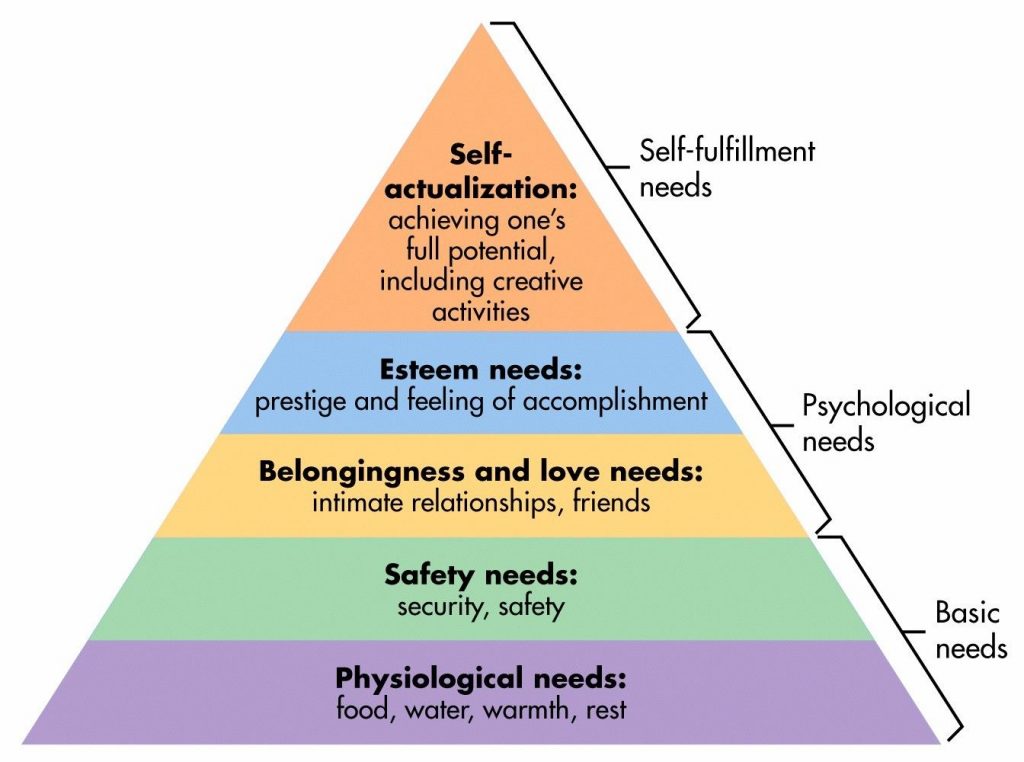
Source: https://www.simplypsychology.org/maslow.html
Humans cannot live alone; they must satisfy certain needs to survive, and they achieve that by creating relationships. It is such an important aspect in human lives that it acquired a spot in Maslow’s hierarchy of needs. Speaking more than one language helps you connect with a wider range of people all over the world.
Knowing that, let’s try to see what data advises us to pick as a language to learn.
Most Spoken Languages Worldwide
What better way is there to maximize the number of people you can speak to than by checking what languages are most spoken worldwide!
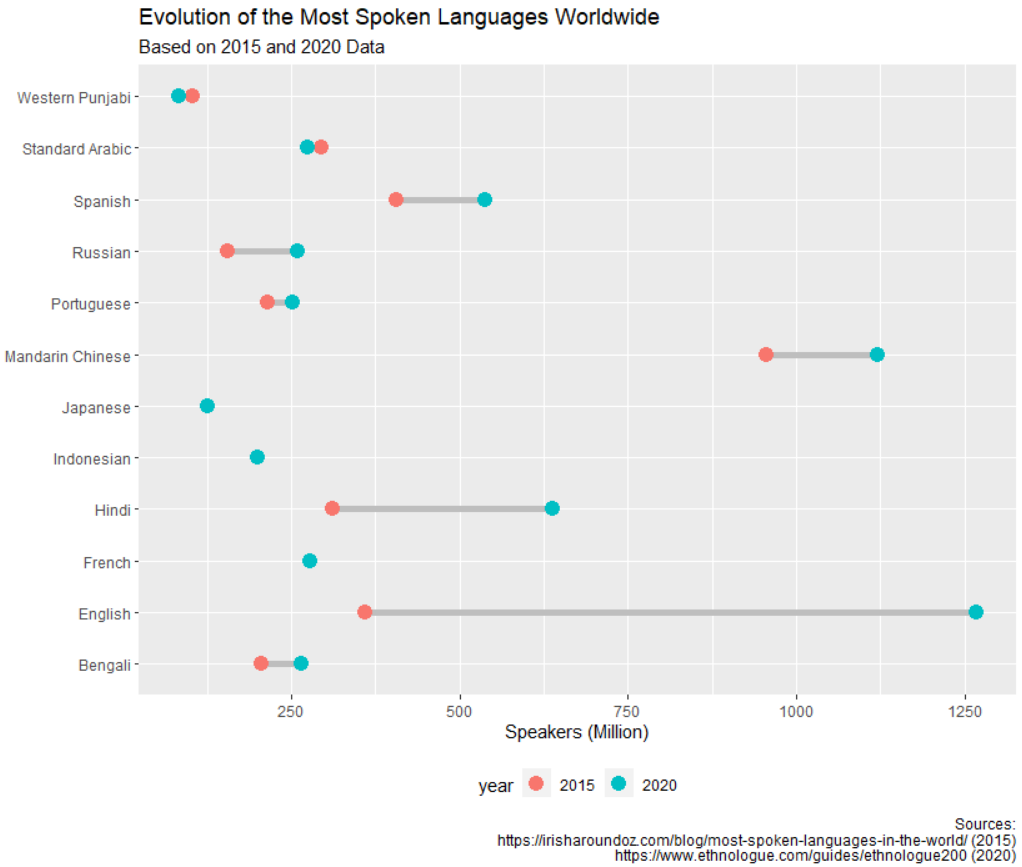
This data is taken from Ethnologue, an annual reference publication published by SIL International that provides statistics and other information on the living languages of the world.
In the line chart above, the red dot represents the number of speakers in 2015 and the blue one those in 2020. The first thing you may have noticed is the long line representing English. This line shows a huge increase in the number of speakers in just 5 years, reaching currently more than 1250 million speakers and even becoming the #1 spoken language worldwide, closely followed by Chinese.
If you look at the red dots exclusively, you will notice that the #1 language back in 2015 was Chinese. For those who still claim that Chinese is the most spoken language, you can now prove them otherwise!
Most languages have their red dot at the left of the blue one, indicating an increase in the number of speakers, however, some languages witnessed a decrease, such as Western Punjabi and Arabic. Through this graph, you can have a rough estimate of the most suited language to learn based on speaker number.
Double up With Duolingo
Assuming you have chosen which language you want to learn, let’s check the most downloaded apps for language learning on Google Play.
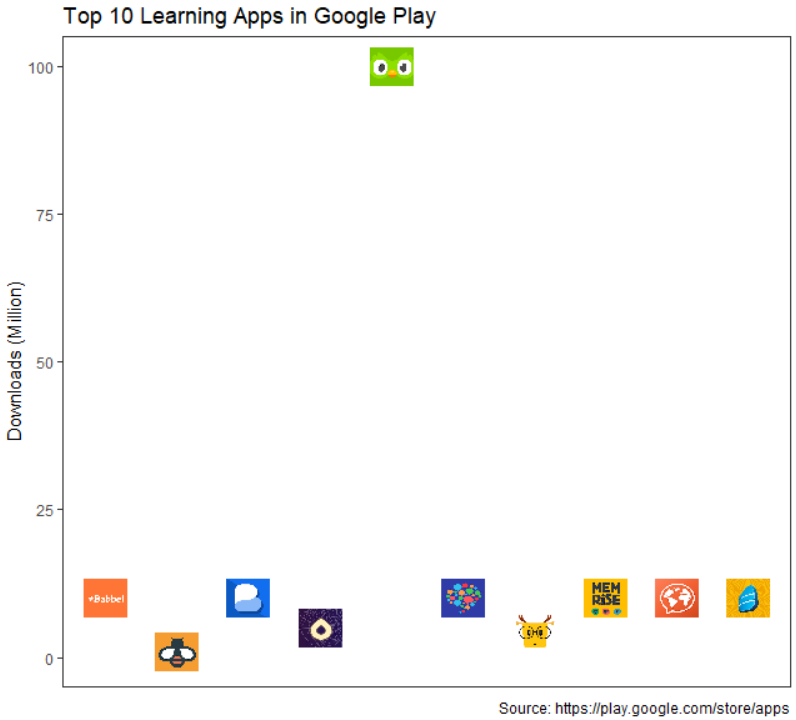
Without a need for an introduction, you surely have recognized Duolingo’s logo, currently the leader and monopolizing the language learning market on Google Play, with more than 100 million downloads.
Let’s try to see why this has happened with the following plot showing us what language speakers (the column on the left) follow which course (the column on the right) on Duolingo.
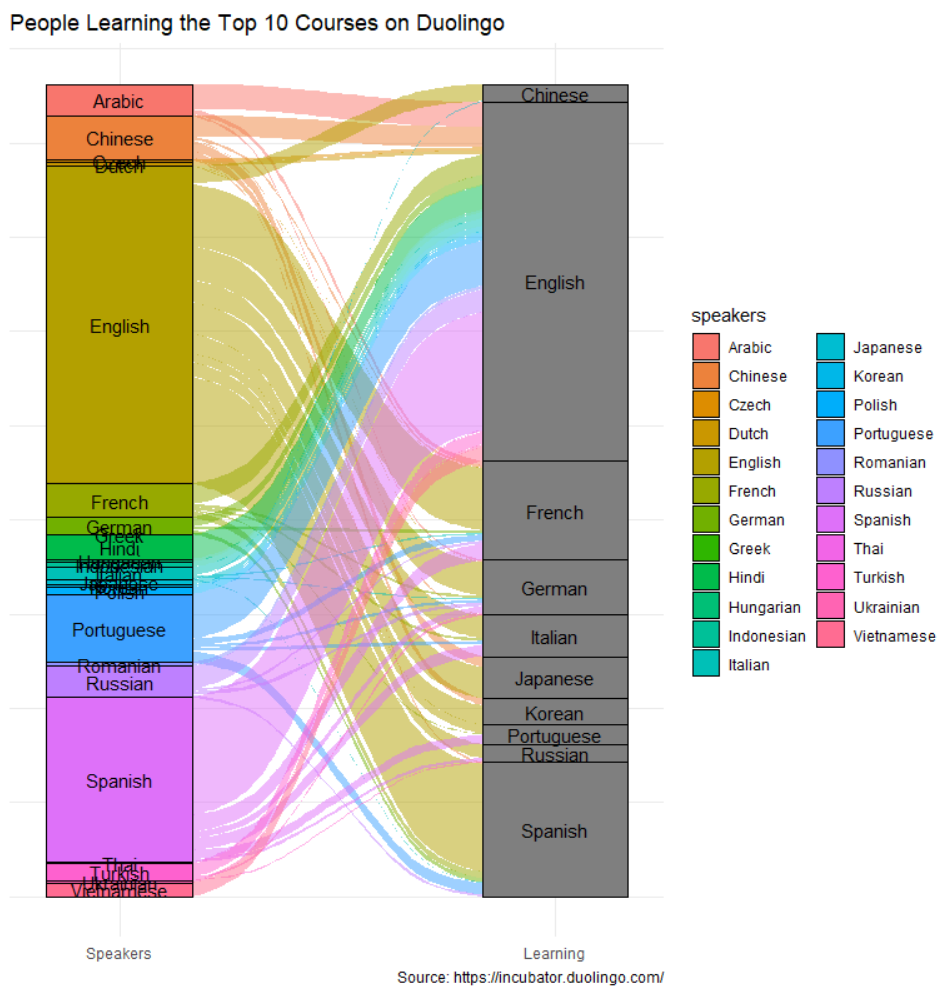
At first glance on the right, you can notice that the English course holds a fair share of the column, meaning it has many followers, and if you look closely at the colors feeding into it, you will see all the colors from the right flowing towards it. All the languages offered by Duolingo have a course teaching English.
Now, if you look at what English speakers in the left column want to learn, we see they do follow all the courses in this top 10 listing besides English, with them favoring Spanish. This could originate from the Americas since almost all South America speaks Spanish while almost all North America speaks English. In parallel, most Spanish speakers want to learn English.
With that said, we wanted to know through this graph why Duolingo is hugely favored compared to other language learning apps.
It all comes down to the diversity of options it offers for those willing to learn a language, not only through the languages being taught but also with the starting language it offers. One can start learning a language through their native tongue if listed, which will be easier than acquiring a new language through one not quite mastered yet. Meanwhile, other apps only offer to teach a new language through English.
In addition, Duolingo’s use is free compared to most other apps that require you to unlock their full content through purchase.
With this variety of speakers to which Duolingo offers courses to, wouldn’t it be interesting to know which area in the world puts the most effort in the language business?
A Leader in the Language Industry
The following donut chart shows the global market share for language services.
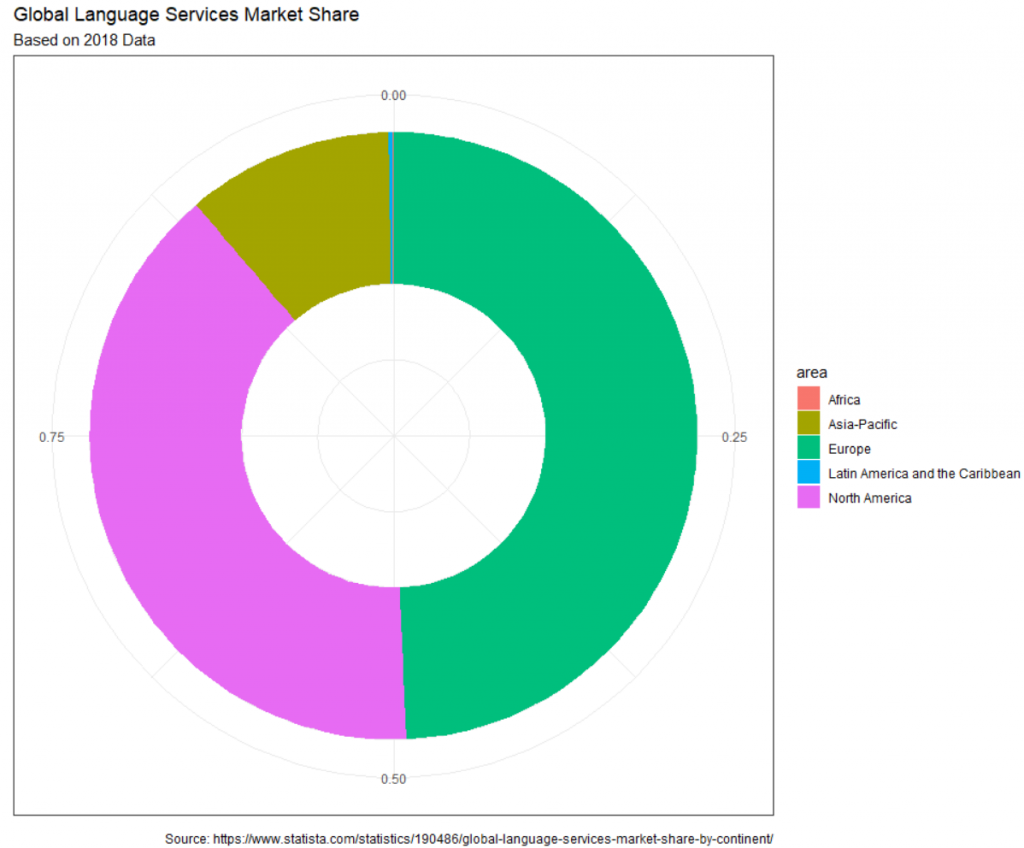
Language services include:
- Language instruction
- Professional translation
- Localization (not only translating content but also making it more familiar or having a local sense to the receiver)
- Voice-over services for media (film, television and video games)
You notice instantly that Europe holds almost half the global market share, followed by North America.
This is due to its diverse range of languages and high level of economic development, as well as the revolution brought by technology to the language services industry, more precisely machine translation based on artificial intelligence.
Let’s zoom in at Europe for a bit and have a look at the median number of languages spoken in each country, provided by Eurobarometer (a series of public opinion surveys conducted regularly on behalf of the European Commission and other EU Institutions).
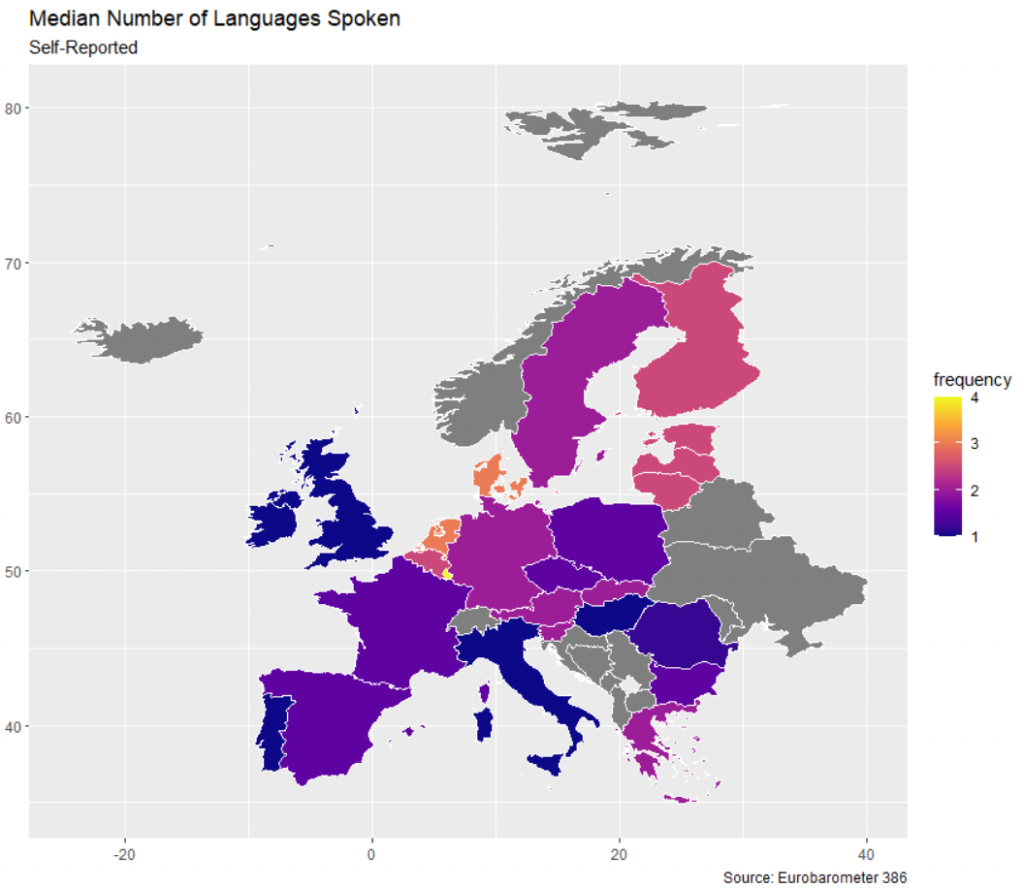
Most countries fall in the range of 1 to 3, indicating an interest in speaking more than their native language.
Now let’s look at it from another angle. What are the foreign languages Europeans deem most useful?
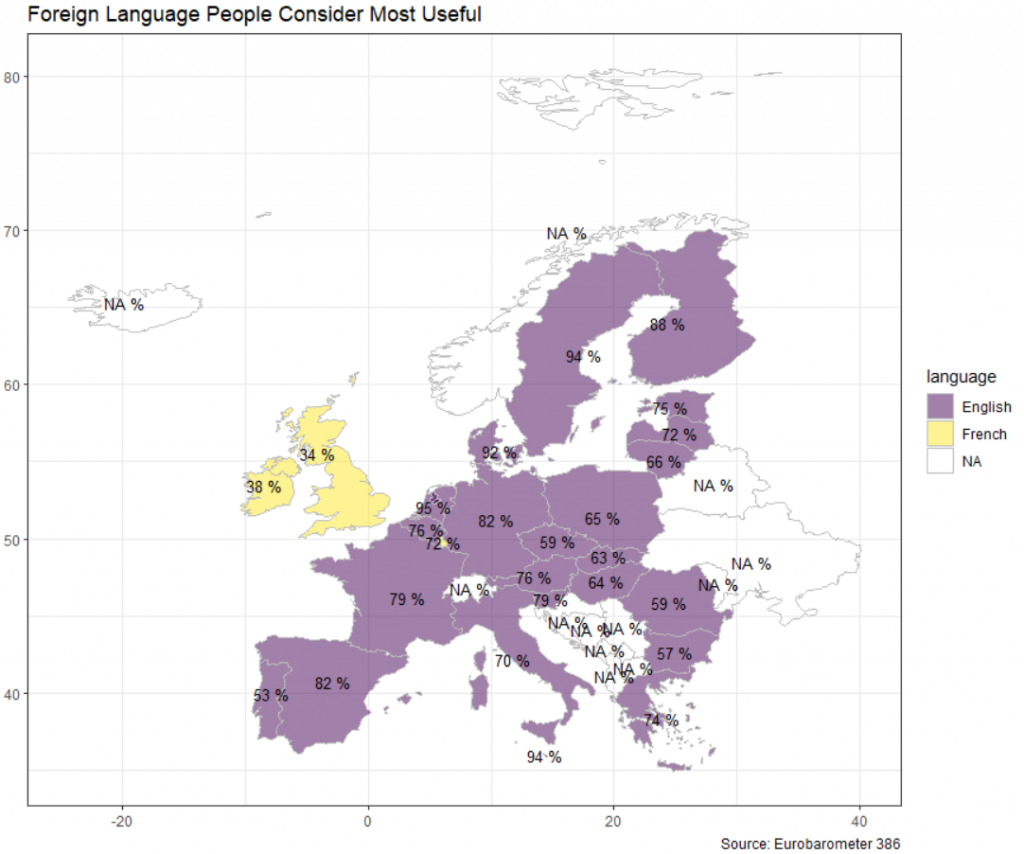
You will notice a whopping win for English, of course, this being the language of international communication, the media, and the Internet.
Let’s look at the second language Europeans consider most useful.
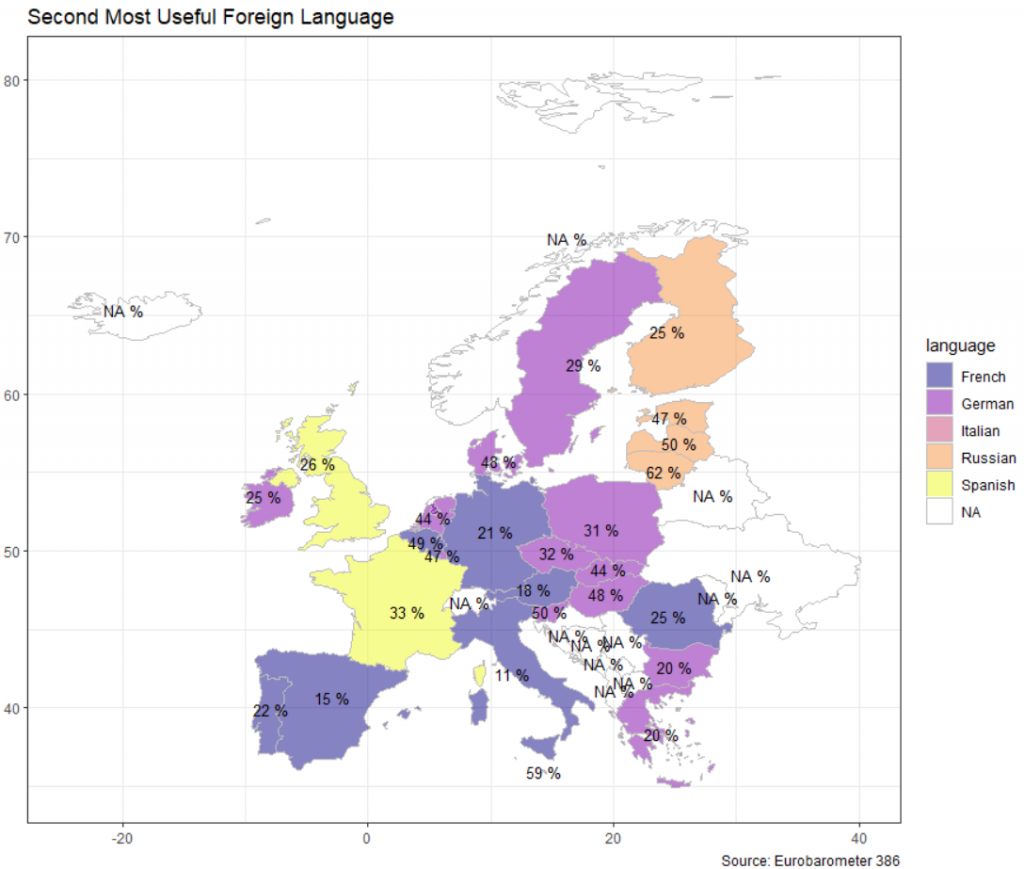
Here comes the influence of geography. Up in the northeast, you will see Finland, Estonia, Latvia, and Lithuania favoring Russian, countries surrounding Germany picking German, countries around France picking French and France, and the United Kingdom choosing Spanish.
Why did the UK pick Spanish and not French? Isn’t France closer? Well, they already picked it as their #1 most useful language, since their mother tongue is English.
With that said, how often do Europeans use their English? The following graph shows data applied to non-native speakers to make things fair.
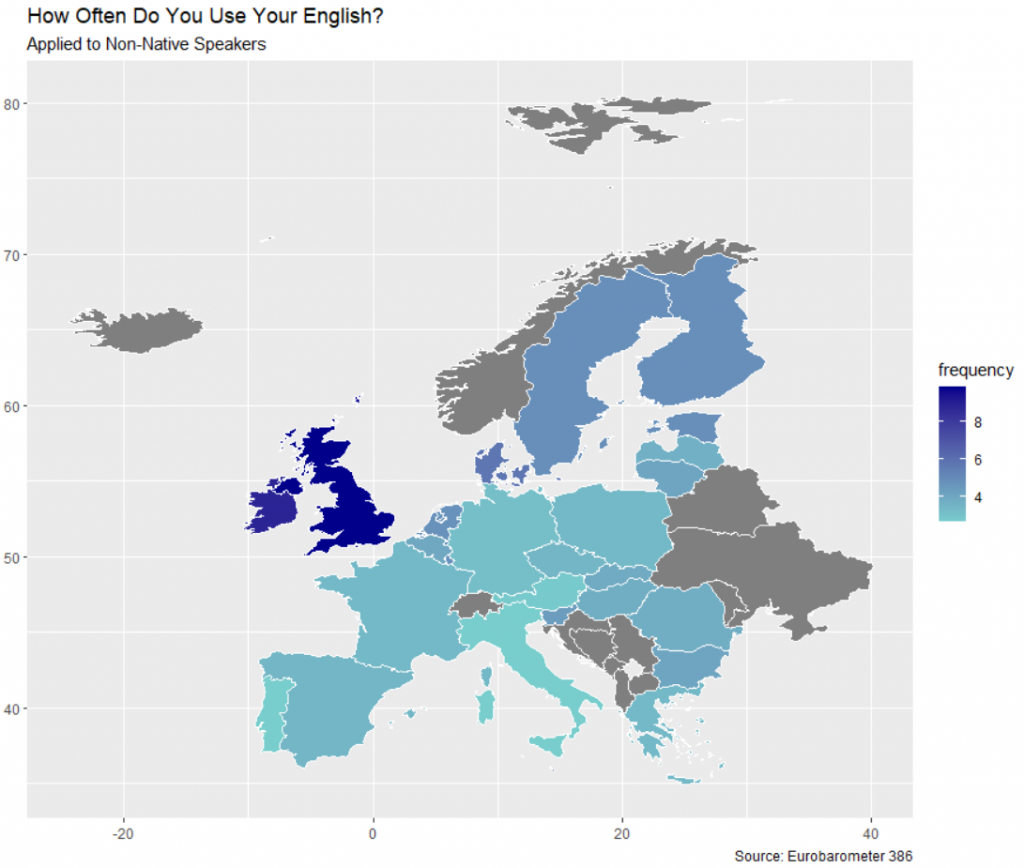
With 0 being never and 10 being every day, it’s not surprising to see non-native speakers living in the UK using their English every day. And the more you go north, the more you see the use of English increasing.
Final Words
Languages are important in every aspect of our lives because it allows us to communicate in a manner that enables the sharing of requests and ideas.
In our quest of finding what language is best to learn, we have taken a look at the most spoken languages worldwide, seen which apps are popular for language learning, and have noticed that the choice of a language could be influenced by the area you live or want to live in. Thus, picking the language you want to take on learning depends on many factors you must consider before making up your mind.
On another note, the impact that a language has on one’s thinking has baffled linguists and scientists who continue to study whether the speakers of different languages think differently.
A different language is a different vision of life.
Frederico Fellini – Italian film director
With that, I encourage you to check out this TED talk by Lera Boroditsky and let the language you want to learn shape you!
